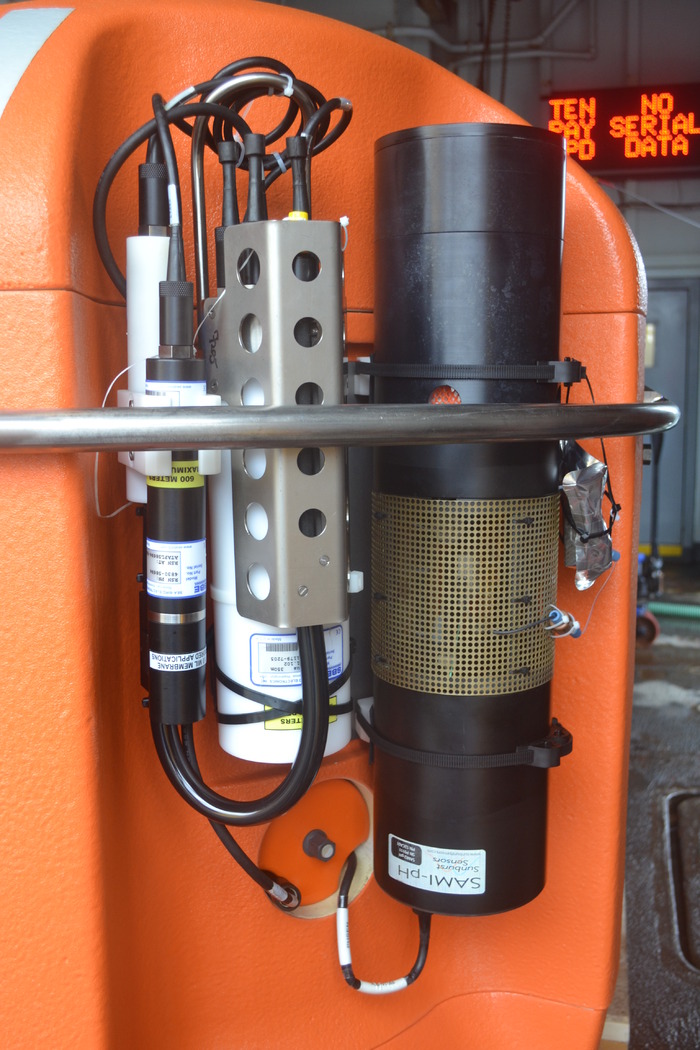Dissolved oxygen is the most well-known gas in ocean waters, because several types of sensors are commercially available. These include membrane Clark-type cells and optode sensors. The OOI program uses both types of oxygen sensors on different platforms. The distribution of oxygen in the oceans is dependent on four major processes: (1) gas exchange with the atmosphere at the ocean surface, (2) mixing of waters away from the surface, (3) production of oxygen from phytoplankton photosynthesis in subsurface waters, consumption of oxygen by plants and animals throughout the water column, and oxidation of plant material at intermediate depths by microbial processes, and (4) increased oxygen in deep waters due to the sinking of cold, oxygen-rich water masses. Dissolved oxygen concentrations have been decreasing in the north Pacific for a variety of reasons. A Clark-type dissolved oxygen sensors are located on the Shallow Profiler. Optode dissolved oxygen sensors are located on the 200 m platform, the Deep Profiler, and on the seafloor. Thus, oxygen measurements will be made throughout the water column at Slope Base and Axial Base sites.
Instrument specifics: The dissolved oxygen sensors are Seabird‘s SBE 43 and Aanderaa’s Optode 4831.


